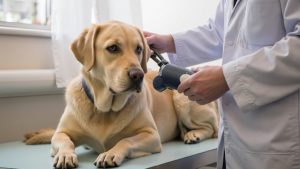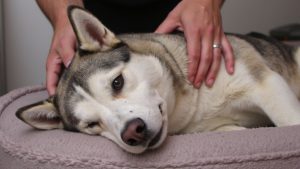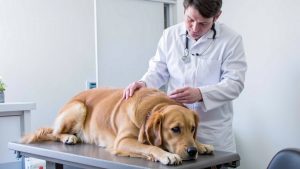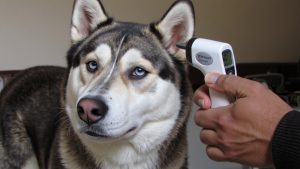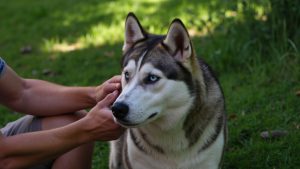
When a dog develops dementia, changes can be subtle at first, often dismissed as normal aging. A veterinarian recently described how a 12-year-old Labrador’s owner noticed concerning changes before realizing they were due to cognitive decline. Understanding these symptoms is crucial for early intervention, which can significantly affect a dog’s quality of life.
The veterinary community often uses the acronym DISHAA to categorize primary symptoms of canine cognitive dysfunction (CCD). These signs include the following.
Disorientation and Confusion
Dogs with dementia often appear lost or confused in familiar environments. Signs may include:
- Getting stuck behind furniture or in corners
- Staring blankly at walls or into space
- Walking to the wrong side of doors waiting to be let out
- Failing to recognize familiar people or pets
- Having difficulty navigating around household objects
Interaction Changes
The social behavior of dogs with dementia often shifts noticeably. They may:
- Become withdrawn and less interested in petting or playtime
- Display increased clinginess or neediness
- Show unexpected aggression toward other household pets or family members
- Fail to greet enthusiastically when owners return home
Sleep-Wake Cycle Disruptions
Changes in sleep patterns are among the most disruptive symptoms. Affected dogs may:
- Sleep more during daylight hours
- Pace restlessly throughout the night
- Bark or whine during nighttime hours for no apparent reason
- Completely reverse their normal schedule, becoming active at night and lethargic during the day
House Soiling
Despite years of perfect house training, dogs with dementia may begin having accidents indoors because they:
- Forget to signal when they need to go outside
- Lose awareness of the need to eliminate until it’s urgent
- Become confused about where they should eliminate
- Can’t remember how to use the doggy door they’ve used for years
Activity Level Changes
Activity patterns may shift significantly in dogs with dementia, including:
- Aimless pacing or wandering
- Decreased interest in toys, walks, or other previously enjoyed activities
- Repetitive behaviors like licking or circling
- Reduced interest in food or altered eating habits
Anxiety and Fearfulness
Dogs with cognitive dysfunction often develop new anxieties, such as:
- Increased separation anxiety when owners leave
- New fears of common household sounds or objects
- Heightened reactivity to thunder, fireworks, or other noises
- General restlessness or inability to settle
It’s important to note that these symptoms can also indicate other health conditions. For example, house soiling might result from a urinary tract infection, and increased anxiety could stem from pain or vision loss. Consulting with a veterinarian is crucial when these changes are noticed in a senior dog.
The progression of dog dementia typically advances through stages, from mild forgetfulness to more severe disorientation and behavior changes. Early recognition of these symptoms allows for interventions to slow progression and improve comfort. Keeping a journal of behavior changes—noting when they occur and frequency—to share with a veterinarian is helpful.
Observations at home are invaluable for diagnosing canine cognitive dysfunction, as dogs often behave differently in a veterinary clinic than in their comfortable home environment.
How is Dog Dementia Diagnosed and Are There Other Conditions That Look Similar?
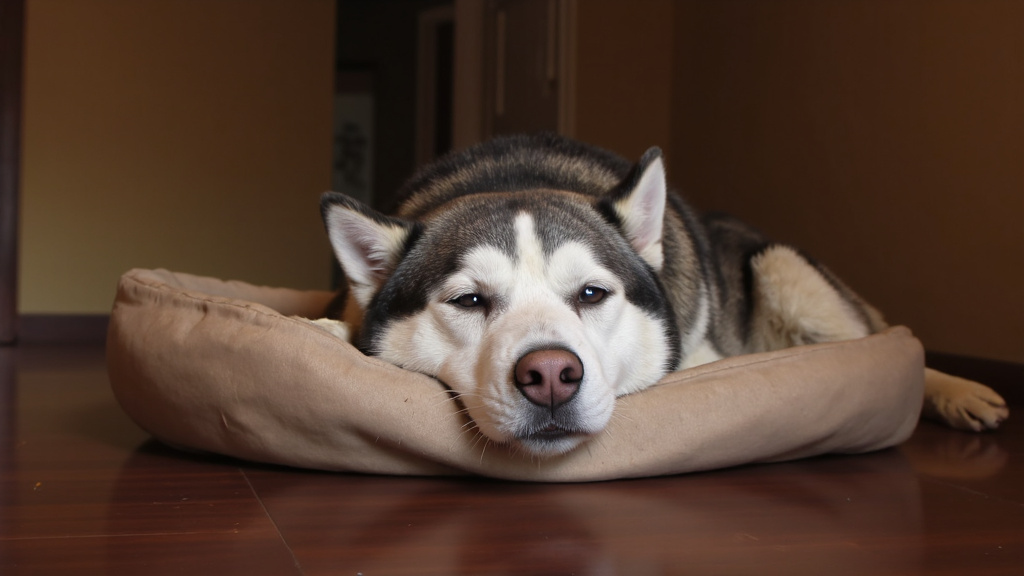
Diagnosing dog dementia involves more than a single test. Veterinarians use a comprehensive approach, including careful observation, detailed medical history, and systematic elimination of other causes, ensuring dogs receive the appropriate treatment for their condition.
The Diagnostic Process
When a dog shows symptoms suggesting cognitive decline, veterinarians typically follow a systematic diagnostic approach:
Veterinarians rely heavily on observations of behavioral changes. Information about daily habits, recent changes, and symptom progression is invaluable. Keeping a journal of unusual behaviors can be extremely helpful.
Vets perform thorough physical examinations to check for health issues, then conduct neurological exams to assess brain function, reflexes, and sensory responses.
Blood and urine tests rule out metabolic disorders that can mimic cognitive dysfunction, revealing conditions like kidney disease, liver problems, or diabetes that might explain the behavioral changes.
Advanced imaging such as an MRI might be recommended for structural brain abnormalities, like tumors or strokes. However, due to anesthesia and costs, they are suggested only when other tests are inconclusive.
Ruling Out Other Conditions
Several health issues can produce symptoms similar to canine cognitive dysfunction, making differential diagnosis crucial. Before confirming dog dementia, veterinarians must exclude conditions such as:
- Thyroid disease (particularly hypothyroidism)
- Brain tumors or other neurological conditions
- Vision or hearing loss
- Urinary tract infections
- Kidney disease
- Pain from arthritis or other sources
- High blood pressure
- Cushing’s disease
Each condition can cause confusion, house soiling, altered sleep patterns, or changes in social interaction that could be mistaken for dementia. For example, a dog with severe arthritis might appear disoriented when navigating stairs, not due to cognitive issues but physical pain.
The Importance of Early Veterinary Consultation
Many senior dog owners attribute behavioral changes to aging rather than seeking veterinary advice. However, early intervention is crucial, whether the issue is dementia or another medical condition. Clinical signs of dementia are found in about 50% of dogs over age 11, making it common but not inevitable in aging.
A proper veterinary neurological examination distinguishes cognitive decline from treatable conditions. Without professional assessment, opportunities to address medical issues or implement strategies that could slow cognitive decline might be missed.
| Symptom | Possible Causes |
|---|---|
| Disorientation | Cognitive Dysfunction, Vision Loss, Other Neurological Conditions |
| Interaction Changes | Cognitive Dysfunction, Pain, Anxiety |
| Sleep-Wake Cycle Disruptions | Cognitive Dysfunction, Anxiety |
| House Soiling | Cognitive Dysfunction, Urinary Tract Infections, Kidney Disease |
| Activity Level Changes | Arthritis, Cognitive Dysfunction, Depression |
| Anxiety and Fearfulness | Cognitive Dysfunction, Noise Phobia, Separation Anxiety |
When to Contact Your Veterinarian
Schedule a veterinary consultation if you notice:
- Sudden behavioral changes, especially disorientation or confusion
- House soiling in a previously house-trained dog
- Changes in sleep patterns, particularly restlessness at night
- Decreased interest in social interaction with family members
- Apparent confusion about familiar commands or routines
- Anxiety or increased vocalization
Remember, many age-related conditions are manageable with proper veterinary care. By seeking advice early, it’s possible to extend a dog’s quality of life, regardless of the ultimate diagnosis.
Canine cognitive dysfunction is a diagnosis of exclusion—veterinarians confirm it after ruling out other medical causes for behavioral changes. Although this process may seem lengthy, it ensures dogs receive appropriate treatment rather than masking symptoms of another condition.
What Causes Dementia in Dogs and Can It Be Prevented?
The brain of an aging dog undergoes significant changes that scientists are still working to fully understand. While veterinary researchers haven’t pinpointed the exact cause of canine cognitive dysfunction (CCD), several key factors contribute to this condition. Much like Alzheimer’s disease in humans, the accumulation of beta-amyloid proteins in the brain tissue creates abnormal deposits that disrupt normal neural function.
These protein buildups interfere with communication between neurons, leading to symptoms of confusion and disorientation. Dogs with dementia experience gradual neuron breakdown and chemical disruption affecting memory and cognitive abilities. Brain trauma from injuries or tumors can also predispose dogs to developing dementia earlier.
Genetic factors play a significant role in determining which dogs develop dementia. Some dogs have a hereditary predisposition to cognitive decline, particularly smaller breeds with longer lifespans. This genetic component explains why dementia can appear in dogs as young as 9 years old, although it’s primarily associated with senior dogs.
Prevention Strategies That Make a Difference
While there’s no guaranteed way to prevent dog dementia, proactive approaches may reduce risk or delay onset. Mental stimulation ranks high in prevention. Teaching new tricks and commands throughout life creates neural pathways that strengthen cognitive resilience.
Daily physical exercise enhances brain health by increasing blood flow and oxygen to the brain. Short, regular walks provide physical benefits and sensory enrichment through new smells and environments. Physical activity combined with socialization opportunities creates strong cognitive protection.
A balanced, nutrient-rich diet forms the foundation of prevention. Foods with antioxidants combat oxidative stress damaging brain cells. Many veterinarians recommend supplements containing omega-3 fatty acids from fish oil to support brain function in aging dogs. Medium chain triglycerides in coconut oil have shown promising cognitive support results.
Regular veterinary check-ups allow early detection of cognitive changes when intervention is most effective. Vets can recommend specific brain-healthy supplements suitable for a dog’s individual needs and health status. Consistent daily routines provide security for aging dogs, preserving cognitive function through predictability.
Dogs engaging in nosework or food puzzle activities maintain sharper cognitive abilities into senior years. These activities stimulate problem-solving skills and tap into natural foraging behaviors sustaining brain activity. Rotating different types of mental enrichment consistently challenges cognitive abilities through variety.
What Are Treatment Options And Daily Care Tips For Dogs With Anxiety, Memory Loss, And House Soiling?
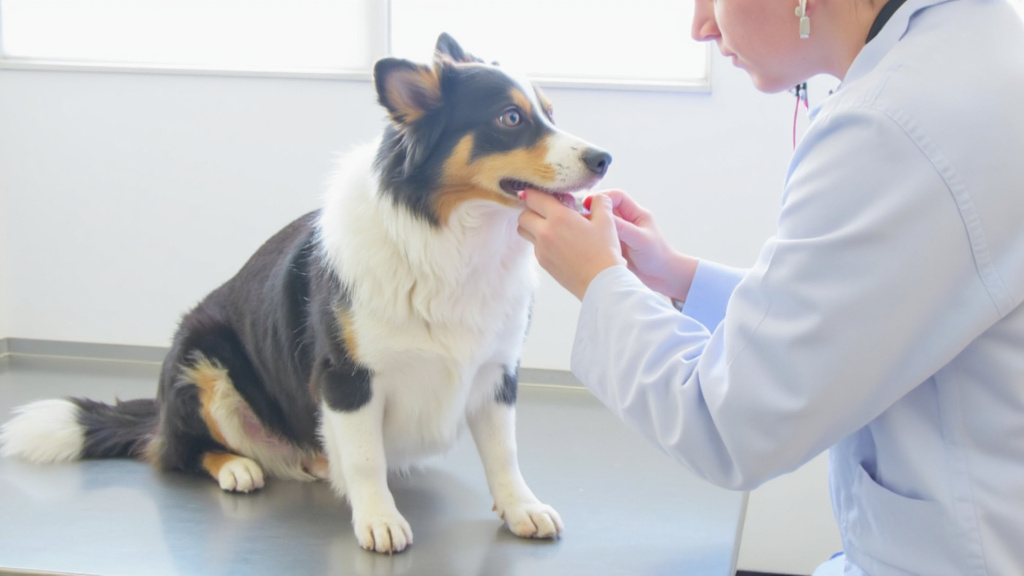
Dogs experiencing cognitive decline often face a combination of anxiety, memory loss, and house soiling issues. There’s no complete cure for canine cognitive dysfunction, but several practical approaches can significantly improve quality of life for both dogs and their human companions.
Medical Interventions That Make A Difference
When facing cognitive challenges, medication can provide meaningful relief. Selegiline hydrochloride (Anipryl®) is approved for treating cognitive dysfunction in dogs and can help reduce symptoms of memory loss and anxiety. Some veterinarians also prescribe anti-anxiety medications when fear becomes overwhelming for older dogs. A thorough veterinary examination is crucial since underlying pain or physical conditions often worsen anxiety and house soiling behaviors.
Nutritional support through diets rich in antioxidants and omega-3 fatty acids may help protect remaining brain function. Specialized senior dog diets combat oxidative stress that damages brain cells. The link between diet and brain health grows stronger with advances in research on canine cognitive care.
Managing House Soiling With Compassion
House soiling is often the most frustrating symptom for dog owners to manage. When accidents happen, it’s important to clean thoroughly with enzyme-based cleaners that completely eliminate odors. Punishing the dog for accidents will only increase anxiety and worsen the problem. Instead, return to basic house training principles with a schedule that accommodates the senior dog’s reduced bladder control.
Create designated indoor elimination areas with piddle pads or washable matting if mobility issues make outdoor trips difficult. For dogs that can still go outside, maintain a consistent schedule with more frequent bathroom breaks—especially in the morning, after meals, and before bedtime. Installing night lights throughout the home can help confused dogs navigate to doors or potty areas during nighttime hours.
Environmental Modifications For Comfort And Security
Dogs with memory loss benefit from consistency. Keep furniture arrangements stable and maintain regular routines for feeding, walking, and bedtime. This predictability reduces confusion and helps the dog feel secure despite cognitive decline. Baby gates can help contain house soiling to easy-to-clean areas while still allowing freedom of movement.
For dogs experiencing separation anxiety alongside cognitive issues, counterconditioning techniques can help create positive associations with departures. Start with brief absences and gradually increase time away as confidence builds. Comforting items with the owner’s scent can reduce anxiety during absence.
Mental Stimulation And Enrichment
Gentle mental exercise helps maintain cognitive function in aging dogs. Food puzzles adjusted to ability level provide appropriate challenges without causing frustration. Short, positive training sessions using familiar commands reinforce neural pathways and boost confidence. Remember to keep interactions positive and avoid overwhelming the dog with too many demands.
Physical exercise matched to ability also helps reduce anxiety and promotes better sleep. Even brief walks or gentle play sessions can improve mood and well-being. The key is finding activities that bring joy without causing pain or exhaustion.
Supporting Sleep-Wake Cycles
Many dogs with cognitive dysfunction experience disrupted sleep patterns, often becoming restless at night. Increasing daytime activity can promote better nighttime rest. Creating a comfortable, quiet sleeping area and maintaining consistent bedtime routines signals to the dog when it’s time to rest. A night light can reduce disorientation during nighttime waking.
Caring for a dog with cognitive challenges requires patience and adaptability. Small environmental changes, consistent routines, and appropriate medical interventions can dramatically improve the dog’s comfort and reduce problematic behaviors. Working closely with a veterinarian to develop a personalized care plan offers the best path forward for managing these complex age-related changes.
Supporting Your Senior Dog’s Cognitive Health, Every Step of the Way
Providing care for a dog experiencing dementia is a challenge and an opportunity to show loyalty and devotion similar to what they have shown. Early recognition of subtle signs, structured routines, and enriching activities create a reassuring environment for the aging dog. The Halo Collar can play a pivotal role here, offering GPS-enabled boundaries and proactive location monitoring to help keep wandering, disoriented dogs safe as they navigate known spaces, while affording them some freedom to enjoy their golden years. Collaborate with a veterinarian to explore treatment, diet, and environment changes, giving the dog every advantage as they face cognitive changes. Attentive support truly impacts their wellbeing and comfort.
For more evidence-based advice and expert tips on senior dog health, visit the Dog Health page.
